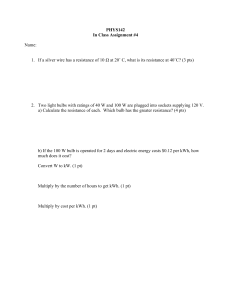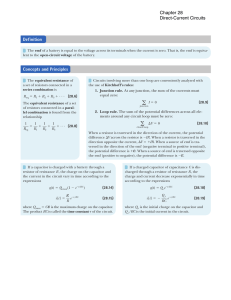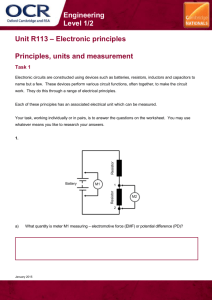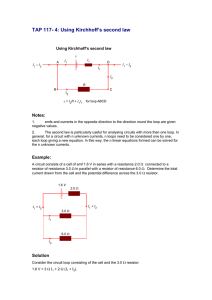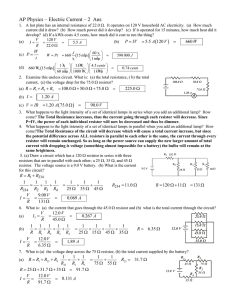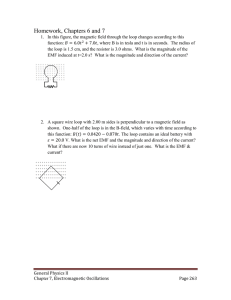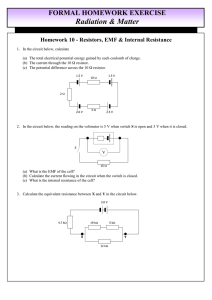Measuring Along The (Conducting) Path
advertisement
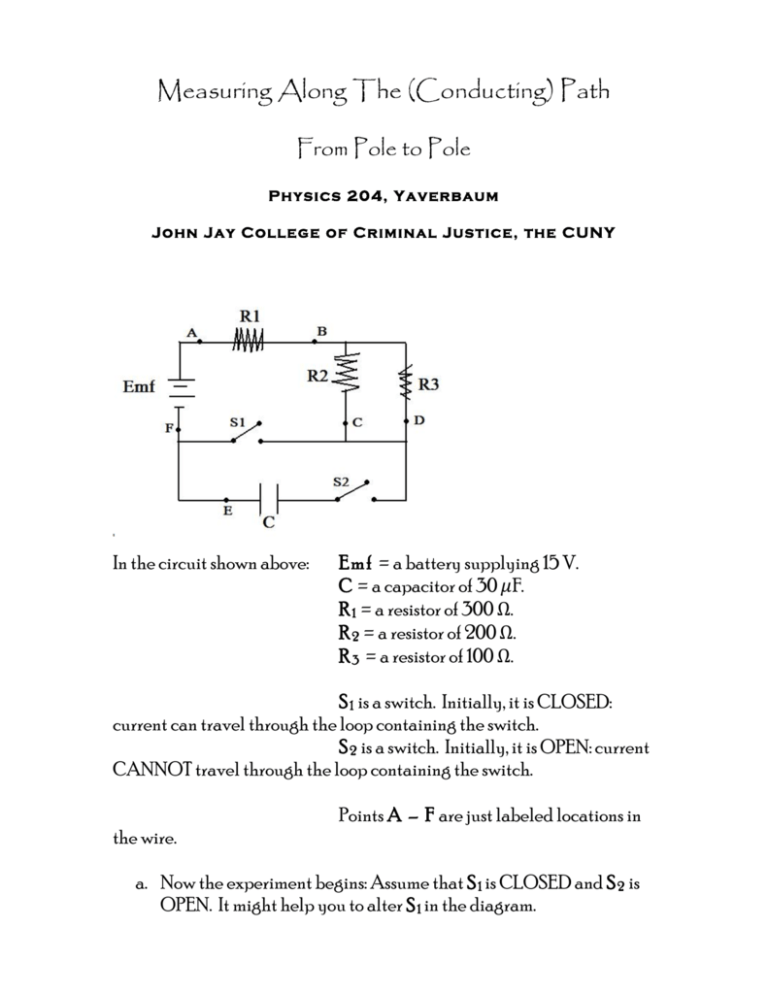
Measuring Along The (Conducting) Path From Pole to Pole Physics 204, Yaverbaum John Jay College of Criminal Justice, the CUNY In the circuit shown above: Emf = a battery supplying 15 V. C = a capacitor of 30 𝜇F. R 1 = a resistor of 300 Ω. R 2 = a resistor of 200 Ω. R 3 = a resistor of 100 Ω. S 1 is a switch. Initially, it is CLOSED: current can travel through the loop containing the switch. S 2 is a switch. Initially, it is OPEN: current CANNOT travel through the loop containing the switch. Points A – F are just labeled locations in the wire. a. Now the experiment begins: Assume that S 1 is CLOSED and S 2 is OPEN. It might help you to alter S 1 in the diagram. Find I , the electric current, at each of the following locations. A) B) C) D) E) F) b. Continue to assume that S 1 is CLOSED and S 2 is OPEN. Also assume that the circuit is grounded at point F. That is, assume that V = 0 Volts at point F. Find V , the electric potential, at each of the following points. A) B) C) D) E) NOW ASSUME that S1 is OPEN and S2 is CLOSED. It might help you to indicate this new reality on the diagram. c. Using Energy conservation, Ohm’s Law and the definition of capacitance, show the rate at which charge builds up in the capacitor as a function of time. That is, derive Q as a function of t—where Emf, R123 and C are constants. R123 stands for the total, “equivalent” resistance provided by R1, R2 and R3 in this circuit. d. On your own copy of the axes below, neatly sketch the function you derived in (c), above. To the right of the axes, you MUST INDICATE the value of Q(max) in terms of Emf, C and/or R123 (3 pts). e. In seconds , determine a NUMERICAL VALUE for the amount of time required for the current in this circuit to decay to ! of its original value. ! That is: Determine t such that 𝐼 = !!! ! (5 pts).
